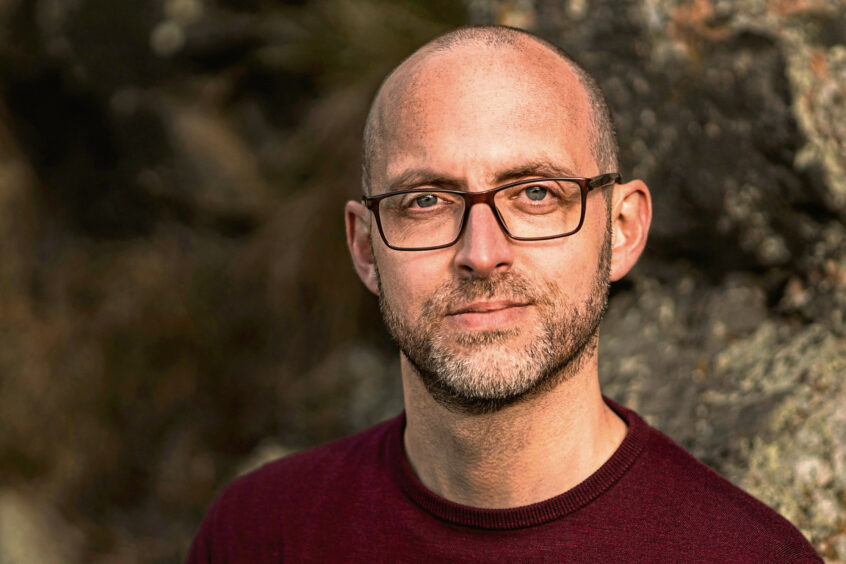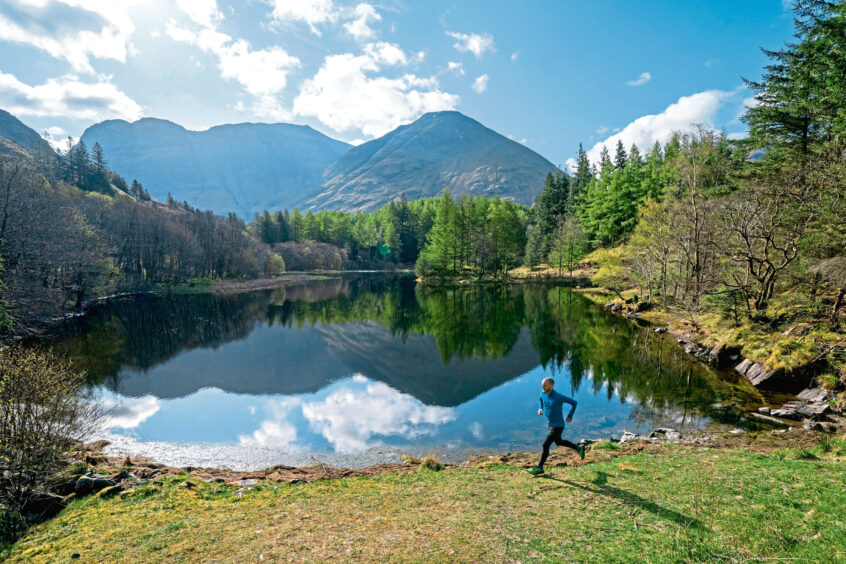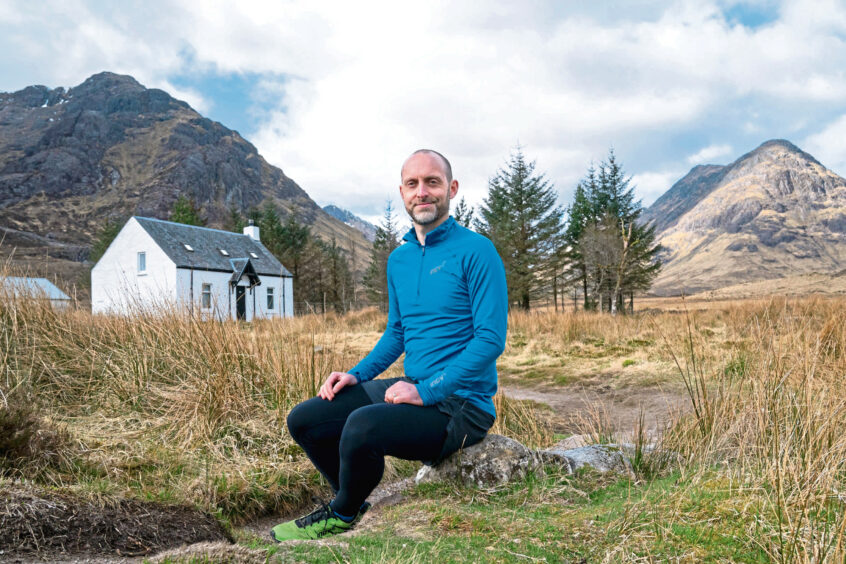As he ran up the Munro, in the heart of Glencoe, Chris Carse Wilson was caught in a terrifying storm.
The sky turned black, a wild wind whipped up, and he was spiked by icy needles of rain. Chris had no choice but to turn on his heels and hare back down the mountain.
It was this deeply intense moment – in October 2016 – that proved to be the inspiration he needed to start writing a book.
The idea had been brewing for years, but it took this – in Chris’s own words – “fundamentally frightening” experience to set him on the path.
Finally, on April 27, his haunting debut novel, Fray, was published.
It’s already received glowing reviews from Alan Cumming, and fellow writers Kirstin Innes and Damian Barr, plus it’s been compared to Janice Galloway’s 1998 classic novel The Trick Is To Keep Breathing.
Chris, who took a sabbatical from his role as communications manager at V&A Dundee to write Fray, says while he’s “beyond thrilled” to be published, that was never his intention.
Rather, he wrote it as a means of exploring some of his internal struggles.
Grief and obsession
Set against the beauty and threat of the Scottish Highland wilderness, and described as an intense study of grief and obsession, Fray follows a nameless narrator as they desperately search for their missing father.
Instead, they discover an abandoned cottage filled with thousands of confusing scraps of paper, detailing the father’s frenzied attempts to find his dead wife.
In a haze of grief, loss and confusion, the narrator begins to piece together the father’s movements.
Consumed by this mission, they, too, begin to fight against internal voices, struggling with what is real and what is not.
Thinking back to his 2016 “eureka moment”, Chris – a passionate advocate for mental health awareness, who was diagnosed as autistic after completing Fray – says: “There was something in that moment, in the intensity of the weather.
“On the way back down I passed an on old, boarded-up hunting lodge. That combination of threatening weather and this abandoned building gave me a way into telling the story.
“I’m not a big mountain climber, or hugely skilled. That adds to the book’s threat and the menace of being in that situation.”
Inspiration
Chris had known for some time that he wanted to write a book, but hadn’t known how, or where to begin.
He adds: “I wanted to write about what it felt like to be in that place, in those horrendous conditions.
“Later, soaked and freezing, I got my phone and tapped out what’s now the first page of my book.”
The rest was written on the bus from Chris’s home in Newport to his work at V&A Dundee, in 15-minute bursts on his iPhone.
He reckons this sense of panic gives his writing an extra edge.
Emotional response
“It was furious and intense and I want readers to feel that emotional response.
“There’s a feeling of tension and panic, of the narrator trying to work out what’s going on, and then there’s me, rushing to finish a sentence or paragraph on the bus.”
Chris had written in secret for years, even hiding Fray from his wife Elaine until it was completed. It was, and still is, his way of managing his own mental health challenges.
“I wrote Fray as a way of exploring what a mental health challenge like grief or obsession feels like,” he elaborates.
“It’s incredible that Alan Cumming’s been glowing about it, and writers like Kirstin Innes and Damian Barr loved it – it’s great people ‘get’ it.”
So does Chris have in mind who the narrator of the dark and atmospheric novel is, I wonder, and what about the setting?
“That’s a really good question,” he muses.
“The landscape, the setting, isn’t Glencoe. It’s imagined. The place is based on bits I’ve jumbled together and created something new out of. The characters are probably similar.
'Being in the wilderness, feeling that threat, was almost like bringing to life what a mental health challenge feels like' @chriscarsewilso's haunting debut Fray is out today: https://t.co/kO1iSdYaVk pic.twitter.com/VTJmr82Csb
— Waterstones (@Waterstones) April 27, 2023
“There are lots of fragments of my own experiences, but what the narrator and the father go through is totally fictionalised.
“People can pick up the book as just an exciting story, or get into the mental health challenges. Some might read it as hallucinatory. I’ve written it in a way that a lot of it is ambiguous.”
- Fray, by Chris Carse Wilson, £14,99, is published by Harper North, a division of Harper Collins. You can buy it here.















Conversation